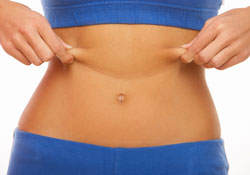Fat Reduction: What Really Works? – 3 Physicians share their experience and expertise for what really works when it comes to today’s body contouring techniques and devices

Amidst the ever-growing list of modalities used to suck, shape and contour with help from heat, cold, light, and more, the question on both physician and patient minds today isn’t what’s available, but what works? Devices hit the market faster than research is able to keep up, so anecdotal evidence holds a high value for physicians who make investments in costly devices as well as patients who make investments in results. In a recent Cosmetic Surgery Times (CST) article, three liposuction experts offered their experience and expertise along with active audience feedback and discussion from the annual meeting of the Cosmetic Surgery Forum in Las Vegas, December 2012. Here’s what they had to say:
Cool It Down
If it’s cold, does it work? The saying goes, "if you can grab it, you can treat it" with the therapeutic cooling power of CoolSculpting by Zeltiq, according to Michael Gold, MD, Nashville, Tenn., and Jeanine Downie, MD, Montclair, NJ, in their contributions to this CST article.
As Dr. Gold wrote, "CoolSculpting by Zeltiq, utilizing cold therapy, continues to gain in popularity and has the clinical science behind it to support its effectiveness in today's fat reduction market. The concept of 'if I can grab it, I can treat it' is how we use this therapy. An approximate 25 percent per treatment reduction in fat is expected with each therapy, and if the patient truly understands the 'hows' of this technology, most every patient is happy with the treatment outcomes."
Take It High-Tech
It is well-known that RF energy tightens skin, but does it do anything for fat? Yes, according to the experts. Drs. Downie and Gold point out to CST that radiofrequency is available through several manufacturers, including:
- Exilis (BTL Aesthetics)
- Thermage (Solta Medical)
- Pellevé (Ellman)
- Apollo (Pollogen)
- Freeze (Venus Concepts)
- Reaction (Viora)
"All have subtle differences that allow one to utilize newer delivery systems for RF into the skin, which have shown efficacies in skin tightening and fat reduction. More clinical trials with all of these devices are needed, however, for all of us to grasp all the differences being claimed by these newer devices," wrote Dr. Gold.
Ultra Focused, Ultrasound
Joel Schlessinger, MD, an Omaha, Neb.-based dermatologist and driving force behind the Cosmetic Surgery Forum meeting pointed out to CST in his contribution that ultrasound energy with Liposonix (Solta Medical) is also showing fat disrupting effects with only a single treatment. However, he wrote:
"It is unclear whether this technology will work the same or better than other devices, such as Zeltiq, that are on the market. Discussion during the session related to other factors, such as pain and time input by the physician and comparisons between these devices. It appears that the pain level of the initial Liposonix device is higher than the Zeltiq, but there are no studies yet of pain levels for the second-generation device."
Injectable Fat Removal
We are an injection nation, so why not consider the power of injectable fat dissolving options? All three experts addressed ATX-101 (Kythera), a liquid, sodium deoxycholate injectable, which is currently in Phase III trials.
While Dr. Downie described the product itself in terms of what it is and how it works, pointing out that it’s limited to reducing limited amounts of fat (FDA-approval for submental application is expected), Dr. Schlessinger discussed the actual Phase II study results:
"Results of these trials showed a greater than 500 cubic mm decrease in submental fat versus 100 cubic mm decrease with placebo after 32 weeks and up to six treatments (p=0.004)," he wrote. "Adverse events were relatively mild in severity and resolved within treatment interval of 28 days. They generally were in the pain/swelling/bruising category."
In the end, Dr. Gold told CST readers: "Skin tightening and fat reduction is big business. Many devices exist for performing this therapy and many claims are made without validated scientific results. We should always examine the peer-reviewed clinical trials that should accompany each company's device, and without those studies, I would be skeptical of using these machines on my patients. Furthermore, with skin tightening projected to be one of the major driving aesthetic therapies being performed in our offices, we should all be viewing these therapies as very rewarding for our patients wanting fat reduction and skin tightening."
Read the original story here.
